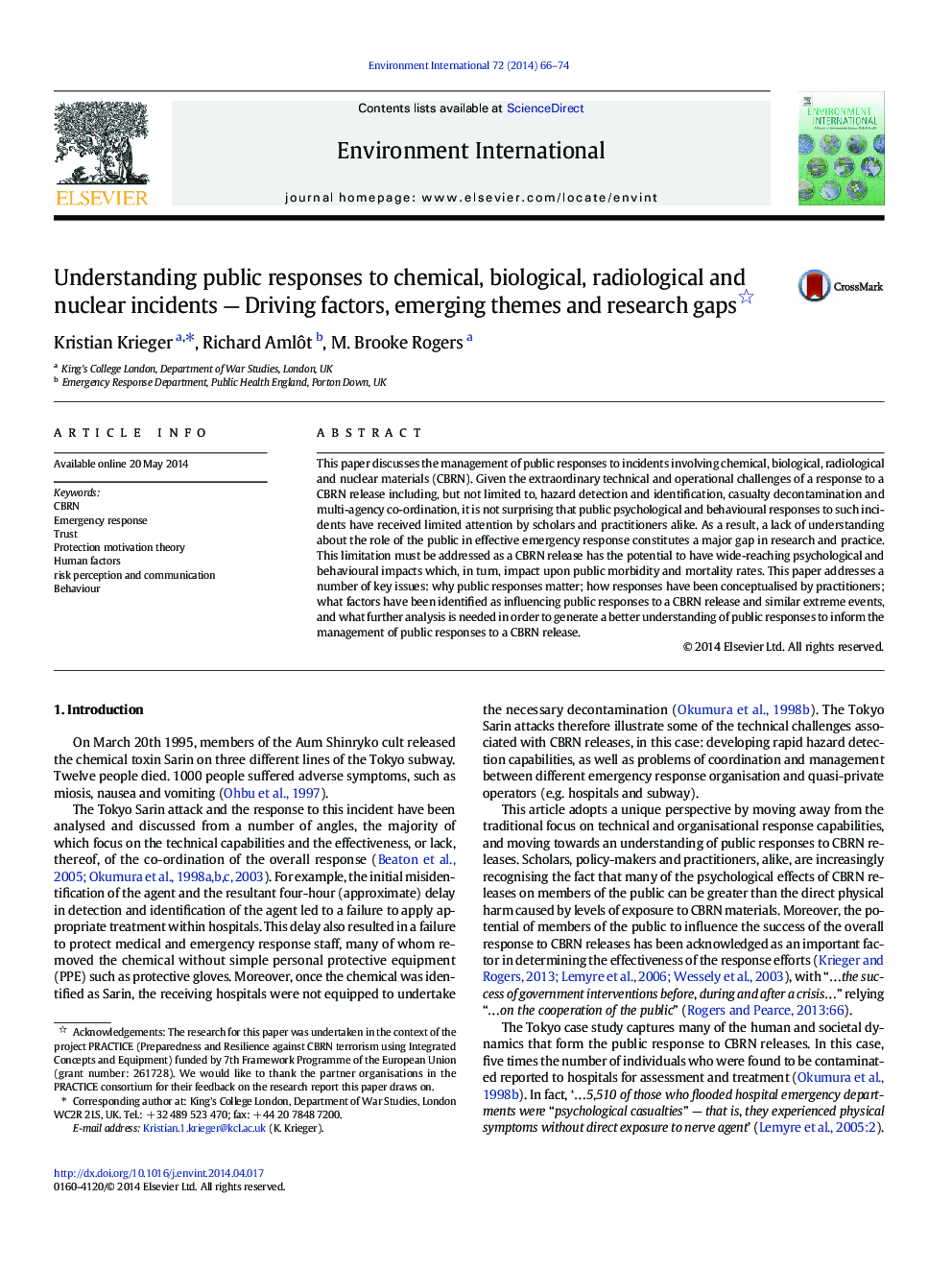| کد مقاله | کد نشریه | سال انتشار | مقاله انگلیسی | نسخه تمام متن |
|---|---|---|---|---|
| 4422742 | 1619056 | 2014 | 9 صفحه PDF | دانلود رایگان |

• Considers public responses to chemical, biological, radiological or nuclear incidents
• An evidence-based understanding of public responses is critical.
• Identifies four factors that shape and drive the response by members of the public to a CBRN release
• These include: perceptions of threat, responders and response efficacy and costs; and communication
• The particular social, political, temporal and cultural context should also be considered.
This paper discusses the management of public responses to incidents involving chemical, biological, radiological and nuclear materials (CBRN). Given the extraordinary technical and operational challenges of a response to a CBRN release including, but not limited to, hazard detection and identification, casualty decontamination and multi-agency co-ordination, it is not surprising that public psychological and behavioural responses to such incidents have received limited attention by scholars and practitioners alike. As a result, a lack of understanding about the role of the public in effective emergency response constitutes a major gap in research and practice. This limitation must be addressed as a CBRN release has the potential to have wide-reaching psychological and behavioural impacts which, in turn, impact upon public morbidity and mortality rates. This paper addresses a number of key issues: why public responses matter; how responses have been conceptualised by practitioners; what factors have been identified as influencing public responses to a CBRN release and similar extreme events, and what further analysis is needed in order to generate a better understanding of public responses to inform the management of public responses to a CBRN release.
Journal: Environment International - Volume 72, November 2014, Pages 66–74